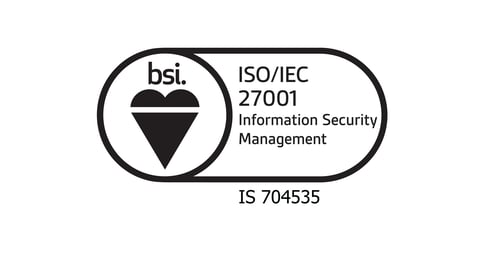6 Tips to Successfully Host a Vendor Demo for a New Wellness Portal

If you're in the market for new wellness technology, following a structured process will help you get the most out of your demo and evaluation process to find the perfect portal. Follow these 6 tips.
Are You Demo-Ready?So it’s time for new corporate wellness software! How exciting… and daunting, but it doesn’t have to be. To minimize the stress and unnecessary work, it’s worthwhile to be prepared and follow a structured process.
I’ve been on both sides of the demo process and I’ll be the first to admit, it’s not always easy. Oftentimes the most challenging part is managing the personalities and expectations of those in the room!
The vendor demo stage is where many organizations stop their structured process which, in my opinion, is a BIG mistake!
I won’t profess to be an expert on evaluating software but have been involved with the process (and led the initiative in some cases) numerous times. l used a similar process before and thought I would share what I learned. I hope you find these resources helpful.
Here are 6 tips before you jump into a demo:
1. Identify and Prioritize Your Needs
If you haven’t done so already, this is THE most important step of the process – identifying and prioritizing YOUR needs and wants BEFORE you see a demo. It’s so easy to get caught up in a demo with the vendor impressing you with cool ‘bells and whistles’ however, there is nothing worse than selecting a vendor to only discover that the corporate wellness tracking software you just invested in can’t do the essential tasks you needed!
If you haven’t completed your internal discovery already, then STOP the process right now.
Instead, download one of these two documents to get the process started:
- Wellness Technology Checklist – this is a high level checklist of features and functionality to get the process started.
- Wellness Portal RFP Template – a detailed RFP template with playbook to get you started with your internal assessment of your wants and needs. Once your internal assessment is complete, you can send your updated RFP to vendors to complete and return to you.
Delve deep in the discovery process – it will pay off in the end!
2. Prepare an Agenda
Have you ever attended a meeting that didn’t have an agenda? Yep, so have I (NOT good). These meetings don’t tend to be productive and can turn into a complete waste of everyone’s time.
Don’t let that happen with your meeting. Evaluating a vendor’s demo is a critical part of the evaluation process so do it right.
- Have an Agenda – this should be obvious but it’s not always the case. Agendas help you stay focused, set expectations and keep you on track.
- Goals - Clearly state the key goals/objectives for the new software in your agenda. Putting it front and center is helpful for the vendors AND your demo attendees (aka evaluators) to keep you on track.
- Specify Time – Clearly indicate how much time the vendor has in your agenda. It helps everyone stay on track.
- Know Your Audience – knowing your audience can make all the difference for your presenting vendors. If they know who is attending, what their role is within the organization and their potential involvement with the new software, a skilled presenter will come prepared with functional and technical experts. As a vendor, if you know the prospective customer's security expert from I.T. is attending your demo then you better have your security expert on-hand to answer questions.
Download agenda and demo script template.

Recommendation: Ask your project team to provide feedback on the agenda and demo script (see below) before sending to the vendor. That way, everyone feels engaged in the process and you are less likely to overlook an important detail.
3. Prepare a Demo Script (aka Demo Flow)
It’s helpful to know that software demos can easily take off in different directions; however, it’s up to you to decide how far off track you are prepared to go – a script can help your demo from ‘falling of the rails’.
- Fair Comparison - When viewing multiple vendor demos it helps if your evaluator's can see an ‘apples to apples’ comparison whenever possible so a general demo flow or script is recommended.
- Allow Enough Prep Time - Ideally, provide the demo script to the presenting vendor 1-2 weeks in advance so they can prepare accordingly. The better prepared they are will result in a more impressive demo for you.
Recommendation: Ask evaluators to hold questions to the end of demo – this helps you stay on track. It’s easy to have one question completely derail the process and prevent you from seeing everything you need to.
4. Invite the Right Stakeholders
It's important to invite the right people to demos as it will make the process more efficient and useful. Remember to include:
- Evaluators - Ideally, your entire project team (which should be a cross-section of resources including Project Manager, Sponsor and your core project team of subject matter experts (SMEs) familiar with your various departmental and/or functional needs and wants) should attend all vendor demos; otherwise, it’s difficult for everyone to get a good feel for each vendor’s strengths and weaknesses. Plus, if everyone attends, the debrief discussions will be more valuable and productive which will help you, ultimately, make a final decision. NOTE: if all attendees can't attend every demo, ask the vendor to record the demo so those absent can watch on their own time.
- Presenting Vendor – similar to the previous point, it’s equally as important that the presenting vendor invites their relevant subject matter experts too. While it’s expected (and actually a good thing) when the vendor says “I’ll need to get back to you on that question,” getting everyone into the same room (or conference call) can help streamline the process and answer as many questions as possible. But, it IS a good thing when they say “I’ll get back to you” because that indicates they don’t want to make promises they can’t keep which is in everyone’s best interest to finding the right match.
5. Provide Evaluators with a Scorecard
If your evaluators are watching multiple vendor demos, it can be really difficult to remember which vendor did what, how they did it and, most importantly, if your evaluators liked what they saw!
- Take Notes - It’s a good idea to provide each evaluator with a scorecard so they can make notes and observations throughout the demo which will help jog their memory during the post-demo debrief meetings.
- Outline Expectations Early - Unfortunately, there may be some ‘anti-paperwork’ evaluators in the room (there always seems to be at least one), but if you state your expectation of a completed scorecard BEFORE the demo, there is a better chance of collecting completed scorecards AFTER the demo.
Download an Evaluator Scorecard template
6. Internal Debrief for Evaluators
After all vendor demos are complete, evaluators should reconvene:
- for a final meeting (or 2 or 3 meetings depending on how many are required to collectively feel comfortable with the decision) to review and discuss the merits and pros and cons of each corporate wellness technology.
- to evaluate the scorecards completed in the previous stage (ideally the project manager will have summarized the scorecards with any other pertinent notes/information for easy review).
- for a courteous ‘debate’. It’s important to discuss all points and concerns as you don’t want them to be stumbling points for the project going forward.
Your debrief meetings can be an organic process or very structured – you know your team and what will work best.
Conclusion
So, there you have it – a process to get you started on the road to a successful software vendor demo and evaluation process. Your evaluators will thank you. Plus, you will gain confidence in knowing that this process will help you choose the right workplace wellness portal for your organization.
About CoreHealth Technologies
CoreHealth Technologies Inc. is a total well-being technology company trusted by global providers to power their health and wellness programs. Our wellness portals help maximize health, engagement and productivity for 3+ million employees worldwide. We believe people are the driving force of organizations and supporting them to make behavior changes to improve employee health is in everyone’s best interest. With the most flexibility, customizations and integrations of any software in its class, CoreHealth’s all-in-one wellness platform helps grow great wellness companies. Simple to sophisticated, based on you. For more information, visit the CoreHealth website or YouTube Channel.
About The Author
CoreHealth Marketing
CoreHealth Technologies Inc. is a total well-being technology company trusted by global providers to power their health and wellness programs. Our wellness portals help maximize health, engagement, and productivity for 3+ million employees worldwide.



